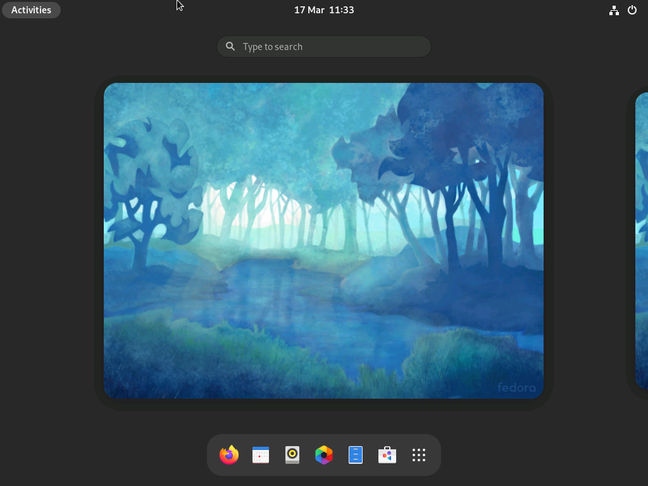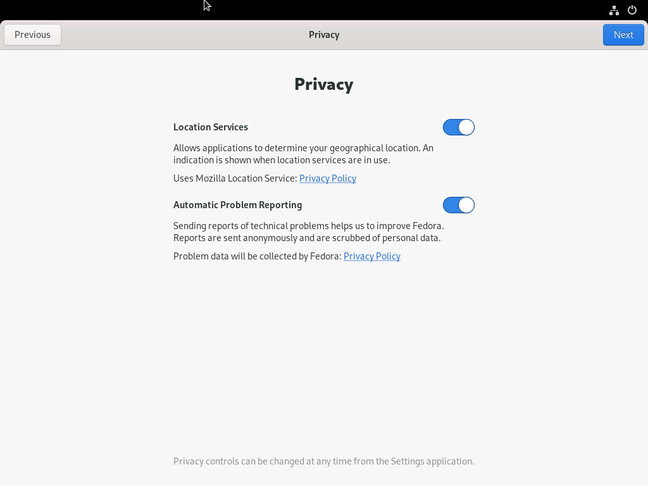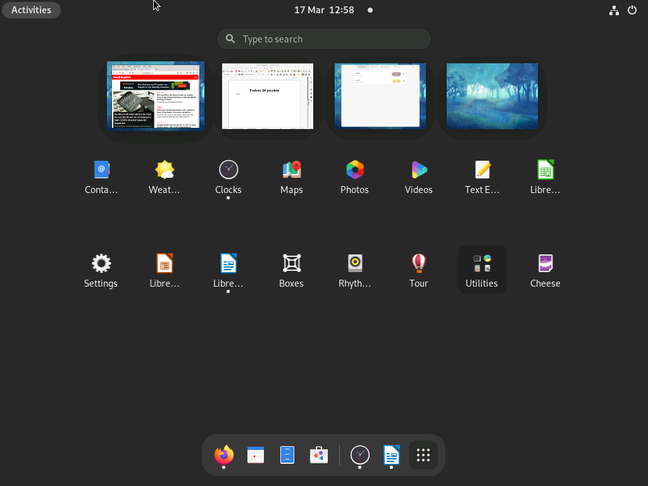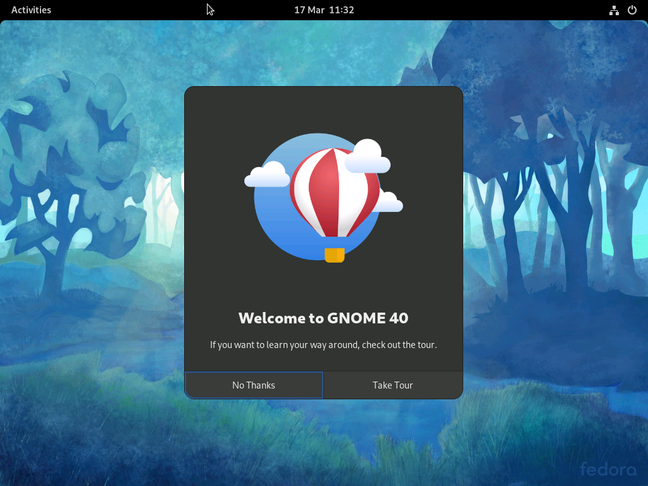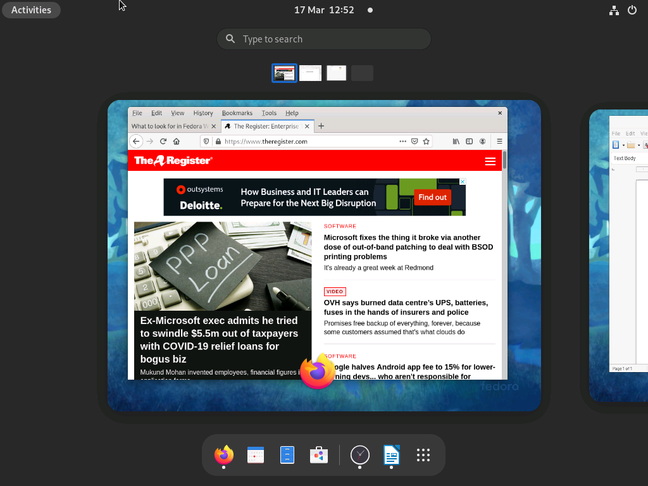This article is more than 1 year old
What's in Fedora 34? GNOME 40, accelerated Wayland, PipeWire Audio, improved Flatpak support, and more
It's all about developers
Ahead of its release next month, the Fedora community has posted details of what is coming in Fedora 34, Red Hat's bleeding-edge Linux distro.
Fedora is where Red Hat tries new features that may make their way into Red Hat Enterprise Linux (RHEL) in future. While sponsored by Red Hat, it is also a community project in its own right.
Although the focus is on innovation, Fedora Workstation describes itself as "a reliable, user-friendly and powerful operating system for your laptop or desktop computer". The server edition presents itself as "a short-lifecycle, community-supported server operating system" which is enough to deter most production use, other than for those who particularly need some new feature which it supports.
New Fedora releases arrive every six months or so, and Fedora 34 is next up. Christian F K Schaller, an engineering manager who leads Red Hat's desktop efforts, has posted about what to expect in this release, due in April. Items that he highlighted include:
- Wayland improvements: The display server protocol which aims to replace the X window system has been updated with accelerated 3D graphics on Nvidia GPUs and headless display support – the latter enabling cloud servers to run a desktop accessed remotely. "Once those two items are out we consider our Wayland rampup/rollout to be complete," said Schaller.
- PipeWire audio: PipeWire is a multimedia processing engine which is already used in Fedora for video, but will now also be used for audio, replacing PulseAudio and Jack. Schaller said this will "make the pro-audio community first-class citizens in Fedora Workstation and Linux in general." That said, Schaller confessed that "it is still somewhat of an open question if we end up actually switching to PipeWire in Fedora Workstation 34" so at worst it may not come until Fedora 35.
- Toolbox: Aimed at developers, this feature is a containerized environment for development and debugging, making it safe to install development tools and to experiment without risking the stability of the host operating system. New in Fedora 34 is the ability to set up RHEL containers in toolbox so that users can run Fedora for their desktop and develop in RHEL. It is necessary to register for a (free) RHEL developer subscription.
- Incremental updates for Flatpak packages: Fedora is aiming to make the Flatpak format the "primary packaging format that Fedora users consume their applications in," said Schaller, but a snag to date has been that Red Hat's preference for OCI (Open Container Initiative) images has prevented incremental updates, which meant large downloads for every update. This is now fixed. There is also going to be integrated access to Flathub.org to ease the path of discovering and installing Flatpak applications.
- GNOME 40: A major new release of the widely used Linux desktop environment, which will therefore introduce many design changes to Fedora uses. This includes a refresh of the Activities Overview, the Fedora application switcher, which features a horizontal dock (or dash) at the bottom of the screen and a workspace navigator at the top, allowing users to switch between workspaces by clicking a thumbnail. A workspace is a desktop space enabling users to switch between groups of running applications. The app grid, showing frequently used applications, also shows the running desktops above.
- Touchpads and mouse: Haptic touchpads will be supported, Schaller hopes, and GNOME input has been moved to a separate thread which should ensure that the mouse remains responsive even when the main Wayland thread is busy.
We ran up Fedora 34 using a nightly build and (to no great surprise) encountered a few installation glitches. We did get a successful install on a Hyper-V virtual machine, and first impressions of Fedora 34 are positive. The developer aspect is important: with increasing focus on Linux for server applications and browser-based, cross-platform or mobile applications for clients, something like Fedora 34 looks more than viable for workstation use. ®
